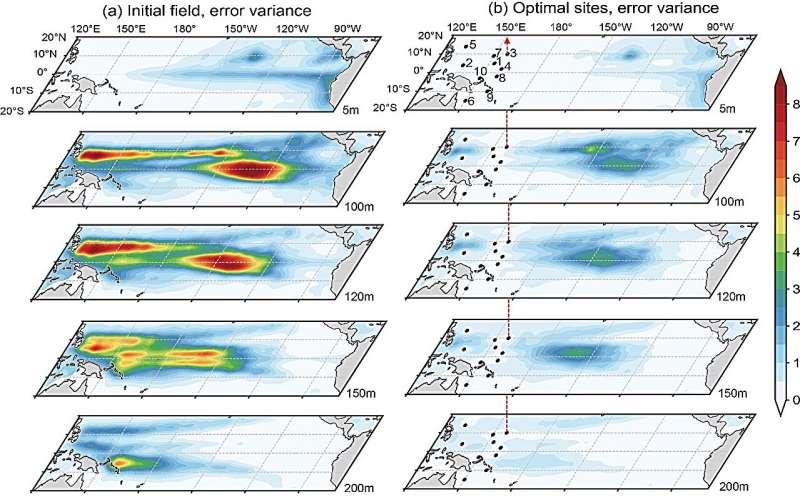
In Figures (a) and (b), the colors depict the uncertainty levels before and after
ENSO, short for the El Niño and Southern Oscillation, is the most influential interannual oscillation, and significantly impacts global climate. The Tropical Pacific Observation System (TPOS), including moored buoys, plays an important role in understanding, monitoring, and forecasting ENSO events.
Unfortunately, many of the moorings in the western Pacific have deteriorated, hindering our ability to model and predict ENSO accurately. To address it, an international project called TPOS 2020 has been launched. In the project, the regional observation program undertaken by China seeks to design a buoy layout scheme in the western Pacific.
The study aims to enhance the prediction of ENSO by strategically deploying expensive and limited moored buoys in the most favorable locations. The research team, led by Hohai University in China, introduces an innovative approach for optimal long-term array design. Their new method allows the observed region/variables to differ from the prediction target, effectively surmounting the limitations of traditional techniques.
Based on the requirements of the TPOS 2020, the study applies the new approach to identify an optimal mooring array in the western Pacific. This optimal array considerably reduces the uncertainty associated with ENSO predictions, enhancing their accuracy and reliability. Given its efficacy, the proposed approach is expected to be widely used in establishing stationary observation networks.
